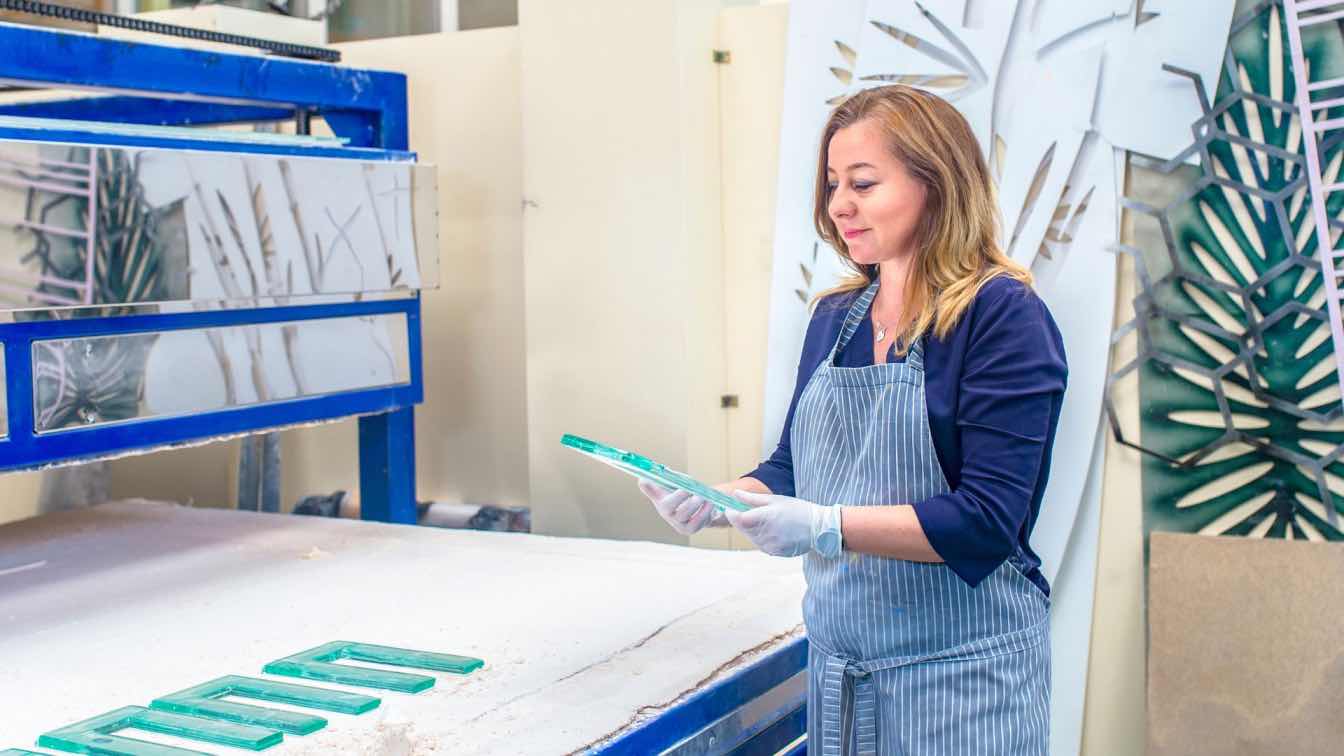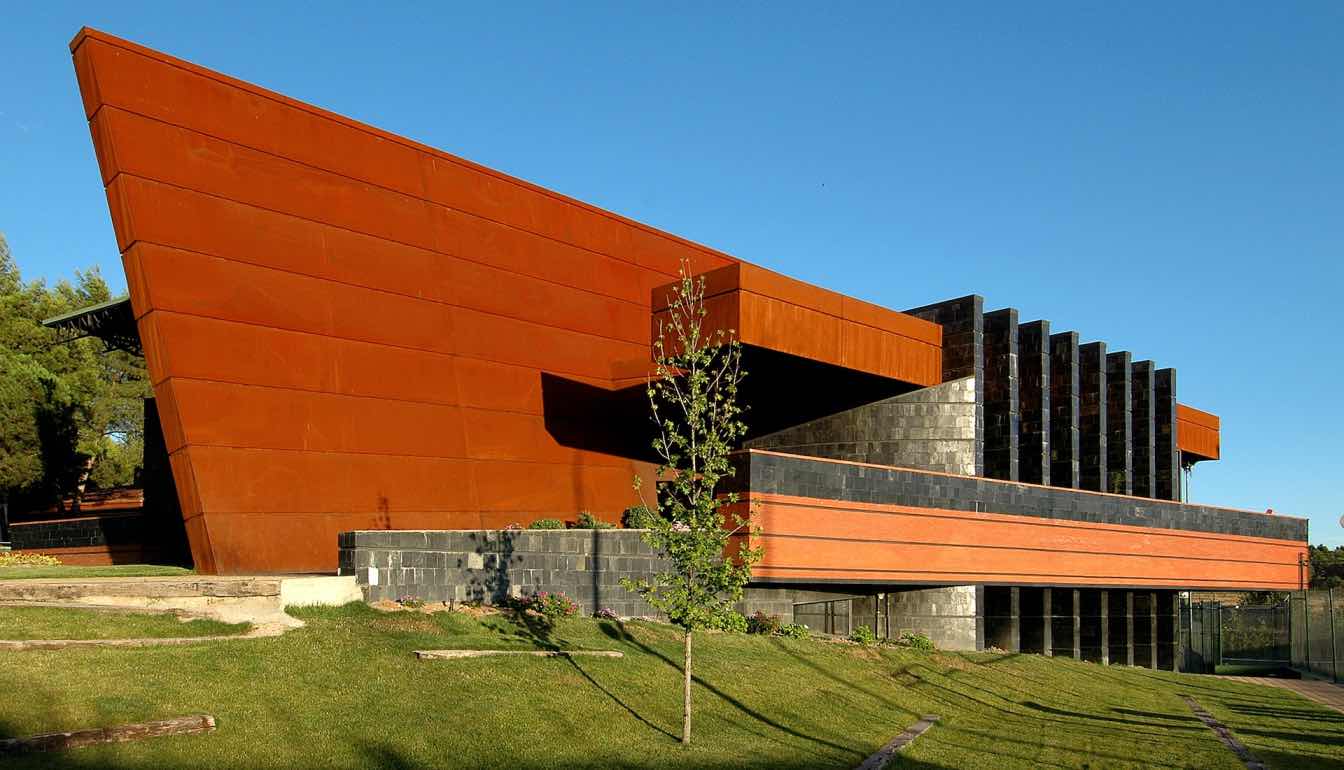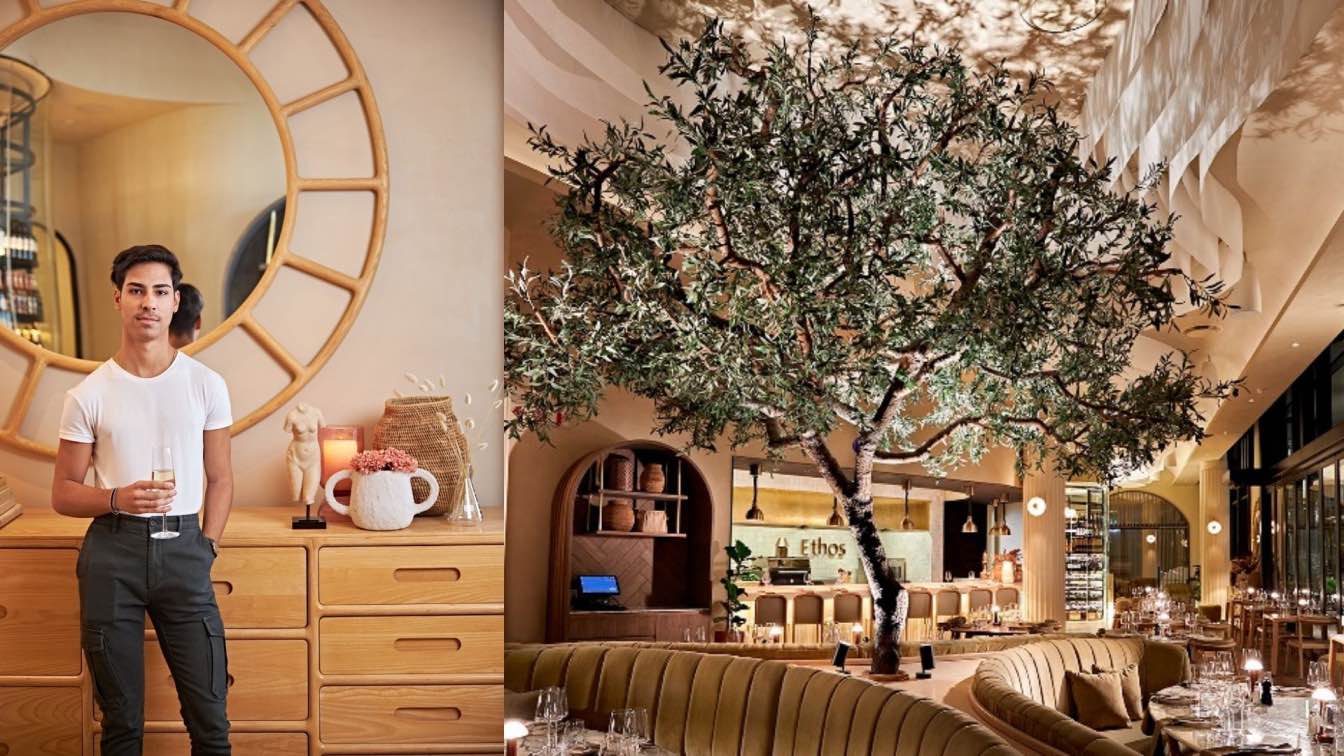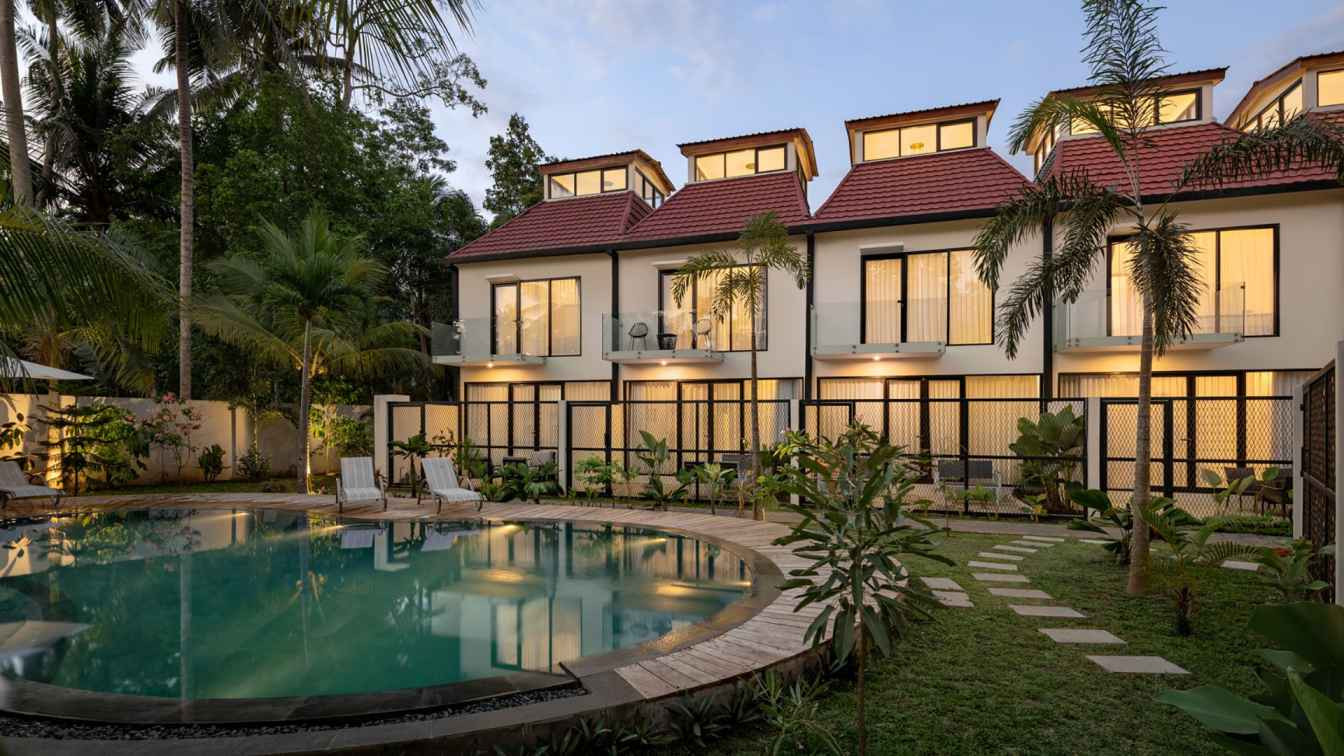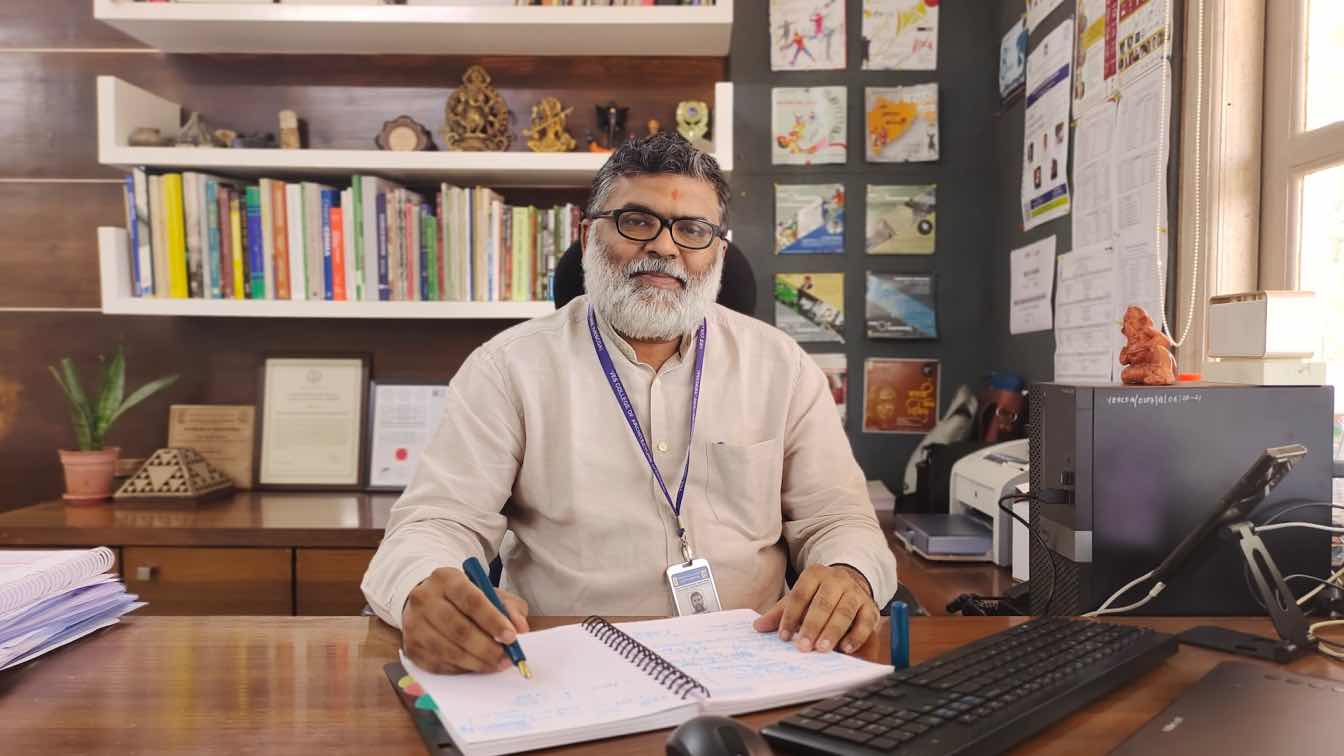Edyta Barańska, an artist, glass designer, and owner of the Barańska Design Studio, talks about her fascination with glass, her professional journey, and collaboration with well-known hotel brands.
Your studio - Barańska Design - specialises in creating unique interior design elements and decorations using art glass. How did your adventure with this demanding, but also beautiful material begin?
I have always been fascinated by stained glass. When I started studying at the Faculty of Glass and Ceramics at the Academy of Fine Arts in Wrocław, I thought to myself - this is it! I treated stained glass as a kind of painting, so I really wanted to get into it. However, during my studies it turned out that glass offers many more possibilities. After all, it's also sculpture, functional design... Studying in the studio of the legend of artistic and applied glass, Professor Zbigniew Horbowy, showed me the various perspectives of working with this material. Glass is indeed a wonderful material - both fragile and very hard, after all quartz is one of the hardest materials.
Initially, you focused on designing vases, platters, candlesticks, among other things... A selection of your centrepieces even made it to the permanent exhibition at the National Museum in Warsaw. Looking at these designs, I cannot help but think that they are more works of art than utilitarian objects...
I made vases and platters while also making sculptures. After graduating, I got a job at an advertising agency to earn a living. However, I decided to work part-time, that is for three days, and devote the remaining three days to working with glass. I knew that if I let that go, I would never go back to glass again. So I took part in exhibitions aimed at young artists in galleries all over Europe. At the same time, I became involved with the Author's Project Bank created by Beata Bochińska. Beata connected young artists with a new business that was just emerging, she offered our projects to the steelworks. Thanks to her, I started working with the ‘Irena’ Economic Glassworks and the Deco-Glassworks. At the same time, I also worked with the ‘Barbara’ Artistic Glassworks in Polanica Zdrój, which was created by Professor Horbowy. The platters currently on exhibition at the National Museum come from a short-run collection made at the ‘Irena’ Commercial Glassworks and in my workshop at the time. They are in the permanent collection of the National Museum in Warsaw at the Contemporary Design exhibition. And the ‘Tulip’ vase, designed for the Deco-Glass Glassworks, was included in a publication entitled ‘100 Best Designs for the 100th Anniversary of the Republic of Poland’.

From the beginning, you worked with steelworks that were brands in their own right. Your name quickly became recognisable, the number of orders grew.... At some point you decided to create your own brand. Was this a difficult decision?
There came a point when I started to run out of time for my own projects. That's why I decided to stop working at an advertising agency. It was the year 2000: a new millennium, new challenges.... The order book from the steel mills was filling up, cooperation with galleries was flourishing. I decided it was the right time to spread my sails. Anyway, I was already the happy owner of my first kiln, which I had purchased for work I had done for a Norwegian steelworks.
Creating an own brand necessarily required facing market realities. This is why, in the course of time, the offer of the Barańska Design studio included lighting and furniture, i.e. items with a clearly utilitarian character. What challenges did you have to face in order to establish yourself on the market?
It was indeed a time of exploration. There was a client who expected a specific product.
Fortunately, I'm a multi-tasker, so at the same time I was designing furniture, glass tiles, tableware, but also textiles and glass gadgets - trinkets for companies for special occasions or holidays. At that time, there wasn't so much competition from China, so it was easier to convince the customer of unique glass. I was lucky enough to be in tune with the trends of the time. Of course, I was constantly following them. I also designed trade fair stands for glassworks, so I was able to travel to Frankfurt for the ‘Ambiente’ and ‘Tendence’ fairs, so I was up to date with the latest developments every year.
The fact that you have been able to create an individual and recognisable brand is evidenced by your work with clients such as Hilton, Sheraton and Marriott. Not every designer is given the opportunity to create for such renowned brands. What was the key to your success?
This is an interesting story. The first one was the Hilton in Gdansk. I got an request to supply artistic soapboxes for all the rooms. I made prototypes and the owner, Filip Wójcikiewicz, decided to meet me. That's when he told me about the Kuryłowicz studio's project and the 12-metre-long installation to appear in the patio. There were many more meetings after that, during which.... we threw tissues and looked at what shape the glass for the lamp could take. The next step was for my design to be accepted by the designers in London. When I had passed all the stages, I faced the biggest challenge of my life so far. However, this earned me a recommendation for further contracts.

You do not only design for well-known hotel brands, but also for individual clients and even with public spaces in mind. Does each of these audiences force a different approach to the design process?
There are clients who trust my artistic flair, and there are those who want to actively participate in the creative process, i.e. discuss design versions on an ongoing basis. I think the same happens in other design industries. In fact, I force a different approach myself, it fascinates me and gives me wings when I can create something new.
It's worth mentioning that you also collaborate with renowned architectural offices such as Tremend and Ideograf. Does collaboration between designers have a special dimension? What projects have you worked on with these studios?
I really enjoy working with designers, with architects, because they motivate me to seek new solutions. They have a vision, which we turn into a final product when we work together. It's an incredibly developing process. Both Tremend and Ideograf specialise in hotel projects.
I worked with the Tremend studio on the design of the 5-star hotel Rezydent Sopot - Mgallery Collection. As the name suggests, the hotel is geared towards interacting with art and it was designed as such. The lobby features paintings, bas-reliefs and custom-blown lamps with a master metalworker. As a result, the hotel lobby has become an art gallery in the centre of the resort.
On the other hand, I had the pleasure of working with the Ideograf studio on a project of a different nature, I am referring to the Grano Solmarina Hotel on Sobieszewska Island. This project was set in the surrounding nature. The island is known for the abundance of birds that inhabit it, so the lamp of my design, which greets guests upon entering the hotel, is a glass variation on the very theme of birds. The entire interior exudes tranquillity and encourages relaxation.
The portfolio of the Barańska Design studio - apart from furniture, mirrors or lighting - also includes sculptures and paintings. Does this prove that you still have the soul of an artist, who dreamt of painting as a student?
I nurture my artistic soul and, as time allows, I give it vent. Whether in the form of small sculptures, such as commemorative statuettes, or paintings and bas-reliefs. Recently, I even faced a great challenge, as I was chosen to create a sculpture to commemorate the 20th anniversary of Poland's accession to the European Union and the 20th anniversary of the EU flag. The sculpture stood in the Supreme Court in Warsaw. It can be viewed as the court organises tours for those wishing to visit.
During our conversation, one can sense that glass is for you something more than just a raw material used in the design process. I would therefore like to conclude by asking - what did Edyta Barańska love glass for?
It's true, I love glass and I love what I do with glass. Often clients tell me that the enthusiasm with which I talk about glass infects them with the desire to have this glass in their own home. Glass is amazing - very fragile on the one hand and hard on the other. It plays beautifully with light, whether in its natural colours or when tinted with metal oxides. It can be incised, engraved, textured and polished. It shines in light and sunlight, which is why it is so perfect for creating lighting. When I'm in my studio, I'm in my element, I love working with this material and hope to do so into old age.

